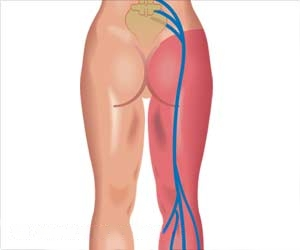Sciatica
Understanding Sciatica: Causes, Symptoms, and Treatment Options
Sciatica is a common yet often misunderstood condition that can cause significant discomfort and pain. It is essential to have a clear understanding of what sciatica is, its causes, symptoms, and available treatment options. In this blog post, we will explore the various aspects of sciatica without delving into copyrighted material.
- What is Sciatica?
Sciatica refers to pain that radiates along the path of the sciatic nerve, which is the longest nerve in the human body. This nerve runs from the lower back, through the buttocks, and down the back of each leg. Sciatica usually occurs when the sciatic nerve is compressed or irritated.
- Causes of Sciatica
Herniated Discs: One of the most common causes of sciatica is a herniated disc. When the soft inner material of a disc leaks out and presses on the sciatic nerve, it can lead to pain and discomfort.
Spinal Stenosis: This condition involves the narrowing of the spinal canal, leading to increased pressure on the nerves, including the sciatic nerve.
Piriformis Syndrome: The piriformis muscle, located in the buttocks, can irritate the sciatic nerve if it spasms or tightens.
Spondylolisthesis: This occurs when a vertebra slips forward over the vertebra below it, putting pressure on the sciatic nerve.
Trauma or Injury: Injuries to the spine or the muscles around the spine can lead to sciatic nerve compression.
- Symptoms of Sciatica
Sciatica is often characterized by:
Pain: The pain can vary from a mild ache to a sharp, burning sensation. It typically radiates along the path of the sciatic nerve.
Numbness and Tingling: People with sciatica may experience numbness or tingling in the affected leg or foot.
Muscle Weakness: Weakness in the affected leg or foot is another common symptom of sciatica.
- Treatment Options
Rest and Activity Modification: Resting and avoiding activities that worsen the pain can help in the initial stages of sciatica.
Physical Therapy: Specific exercises and stretches can alleviate sciatic pain by improving flexibility and strength.
Medications: Over-the-counter pain relievers or prescription medications may be recommended to manage pain and inflammation.
Heat and Cold Therapy: Applying heat or cold packs to the affected area can help reduce pain and inflammation.
Epidural Steroid Injections: In severe cases, a healthcare provider may recommend injections of corticosteroids to reduce inflammation around the sciatic nerve.
- Conclusion :-
Understanding the causes, symptoms, and treatment options for sciatica is crucial for anyone experiencing this condition. It is essential to consult with a healthcare professional for a proper diagnosis and personalized treatment plan. While there are various ways to manage sciatica, the effectiveness of treatment may vary from person to person. Always seek professional medical advice for your specific situation.
Remember, this information is for educational purposes only and should not be considered a substitute for professional medical advice, diagnosis, or treatment.

